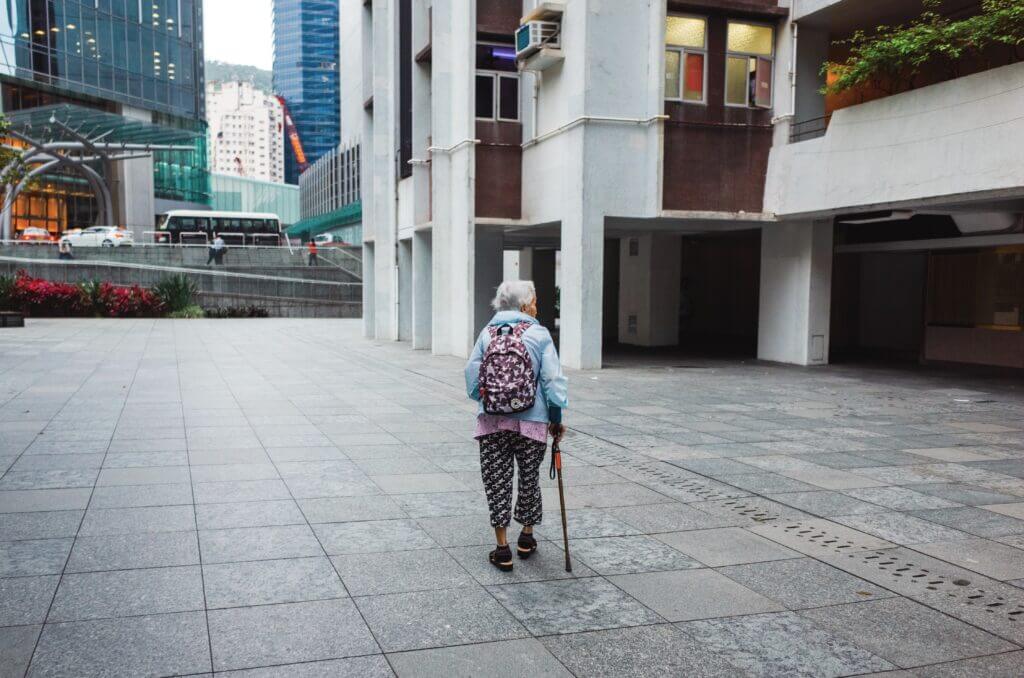If you are an older adult, a fall can be terrifying because of the severe injuries likely to result. Approximately 300,000 seniors in the United States are hospitalized for hip fractures every year and falls cause 95% of those fractures. Most traumatic brain injuries result from falls as well.
On a broad scale, elderly fall prevention can prevent thousands of severe injuries and deaths every year. By adopting the following fall precautions for seniors, both at home and when you go out, you may be able to prevent injuries that could have life-changing consequences.
1. Use Assistive Devices
Assistive devices are what many people think of first when they think of fall prevention. They include mobility aids such as a walker or a cane to help you get around, whether inside your home or out in public.
However, there are also assistive devices that you can have installed around your home to prevent falls. Examples include grab bars in your bathroom and railings along your staircases. Grab bars in the bathroom are usually installed next to the toilet and in the shower or tub. You probably already have a handrail on one side of your staircase, but you should have another installed on the other side for greater stability. A bath seat or non-slip mat in your tub or shower can also provide precaution.
2. Remove Tripping Hazards
You may have clutter around your home, such as newspapers or boxes, that poses a tripping hazard in high-traffic areas. Maintaining a safe and clear zone is best. If you cannot get rid of clutter, you should store it out of the way in a safe place. However, it is not only clutter that may pose tripping hazards but other household items:
- Loose rugs
- Electrical or phone cords
- Plant stands
- Magazine racks
- Coffee tables
If you cannot remove items such as these, move them so that they are out of the walkways in your home. If you have loose rugs and do not want to get rid of them, add a slip-resistant backing or secure them with tacks or double-faced tape. If there is damage to carpeting or floorboards underneath, it should be repaired or replaced as soon as possible.
3. Be Sure You Can See Obstacles
It is more difficult to avoid a tripping hazard if you cannot see it. Ensure your home is well-lit, especially in areas where falls are more common, such as the stairwell, bathroom, or bedroom. If you often need to get up in the middle of the night, you should have a lamp within easy reach of your bed and have night lights in the hallways and bathrooms. Illuminated or glow-in-the-dark light switches are easier to find, especially if they are not near the room entrance.
Conduct frequent checks of your vision to be sure you can see any tripping hazards. Bifocal or progressive lenses can distort distances, making obstacles more difficult to avoid. It may help to order an outdoor-only pair of glasses with which you can swap your bifocals for walking outside.
4. Talk To Your Doctor
Certain medical conditions can increase your fall risk by making you dizzy, causing joint pain, or decreasing strength in your legs. Your doctor can assess your fall risks based on your medical history and suggest specific precautions you can take to counteract them.
Certain medications can cause side effects such as dizziness or drowsiness that may increase your fall risk. You should not stop taking these medications, but you should talk to your doctor about the side effects. It may be possible to alter your medications to still get the medication’s benefits without increasing the risk unnecessarily.
5. Increase Physical Activity
You may think that the best way to prevent falls would be to move around as little as possible. The opposite is true; increasing physical activity is one of the best ways to prevent falls. Improved balance, coordination, flexibility, and strength can help decrease your risk of falling and injuring yourself. You can do exercises to help these areas specifically, but you have to be sure that you do not go beyond your capabilities. Your doctor should suggest suitable activities for you to do based on your physical condition and limitations. Examples of gentle exercises that are usually appropriate for elderly people to do include yoga or tai chi, water aerobics, or walking.
The statistics surrounding falls in the elderly can be grim. However, you do not have to feel helpless at preventing them. There are several fall prevention steps you can take yourself to prevent falls.

